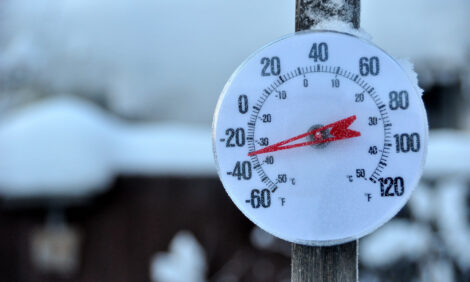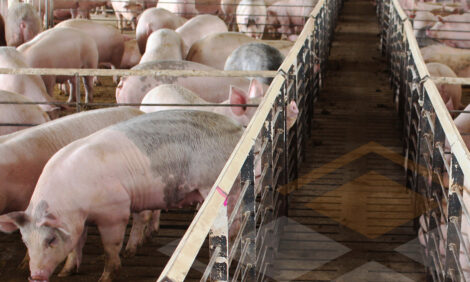



Manipulating Meat Quality with Diet
This report contains introductions to 3 articles presented at the Banff Pork Seminar 2004 Proceedings on the topic of producing pigs that yield pork that consistently meets market demands. |
Contents
Manipulating Pork Quality Through Production and PreSlaughter Handling
Measuring Pork Quality on the Kill Floor
Nutritional Manipulation of Pork Quality: Current Opportunities
Manipulating Pork Quality Through Production and PreSlaughter Handling
By Nather Aziz, Maple Leaf Pork,
Introduction
Pre-slaughter handling has a significant effect on meat quality, depending on the severity of the stress and the consequent changes in the metabolic activities in the muscle. Pigs can be stressed at any point, starting from loading at the farm to slaughter.
The level of stress is mostly dependent on the genotype of the pig, with higher levels in PSS and RN gene carrier pigs. Resting time in the barn prior to slaughter can range from at least 2-4 hours to overnight and it is influenced by the genetics of the pig, feed withdraw time and distance of transportation.
During resting in the barn, each pig requires about 0.55-0.67 m2/100 kg to move and rest. Mixing pigs with others unfamiliar is not recommended, especially in large groups in crowded pens.
Drinking water should be reachable, and water sprays and misting is recommended especially during the hot season to reduce body temperature and respiratory rate. Stressing the pigs between lairage and stunning is critical and meat quality can be damaged.
To read this article please click here (PDF)

Measuring Pork Quality on the Kill Floor
By Bethany Uttaro and M.E.R. Dugan Agriculture and Agri-Food Canada,
Introduction
It should be possible both to evaluate (and reward) the degree of success a producer has reached in creating a premium pig, and to sort the top carcasses for premium market destinations.
The current state of industrial carcass quality evaluation, nationally and internationally, will be covered, followed by future possibilities with currently available equipment, and then what should be possible with upcoming technology. Basic information on current equipment may be obtained, in most cases, by visiting the manufacturer’s website.
Issues surrounding the detection, evaluation, and prediction of carcasses with non-normal meat quality (ex: PSE) on the kill floor, will not be discussed, simply because this presentation is intended primarily for producers, and there are many ways in which meat quality can be strongly influenced after the animals are out of the producer’s hands.
To read this article please click here (PDF)

Nutritional Manipulation of Pork Quality: Current Opportunities
By M.E.R. Dugan, J.L. Aalhus and B. Uttaro Agriculture & Agrifood Canada,
Introduction
The pork industry is naturally segmented into producers, packers and retailers. The question is what can producers do to produce pigs that will yield pork that consistently meets market demands? What are market demands? Previous demands for leaner meat have driven the reduction of fat in pork and consumer demand for “normal” pork has driven selection of pigs without the halothane gene and now the RN gene.
Current demands are for “normal” pork to meet domestic and export consumption and to meet specialized markets (ex. darker-firmer pork, highly marbled pork or organic pork). Markets drive demand and demand is the impetus for change but opportunities for change may not always be easily identified or implemented and may require integrated industry approaches.
Quality pork is the combined result of genetics, nutrition, production management, transportation, slaughter, processing and retailing practices, and each share responsibility in the quality of the final product.
Most nutritional manipulations will, therefore, not be magic bullets that lead to complete resolution of pork quality defects or unfettered production of “enhanced” quality pork. With the understanding that certain risks are involved in achieving desired outcomes for nutritional manipulations, there are a number of promising nutrients that have been shown to positively affect pork quality.
The subject of nutritional manipulation of meat quality has recently been reviewed (ex. Pethick et al. 1997, Pettigrew and Esnaola 2001, Rosenvold and Anderson 2003) and a factsheet on the subject has been published by the National Pork Producers Council (Ellis and McKeith 1999; www.porkscience.org/documents/Other/qnutritinfluences.pdf). For this presentation I’ve taken the liberty of extensively citing Pettigrew and Esnaola (2001) in addition to reports published subsequent to this review. This presentation will consider only a few of the more extensively investigated nutrients.
To read this article please click here (PDF)
Source: Paper presented during the 2004 Banff Pork Seminar Procedings







